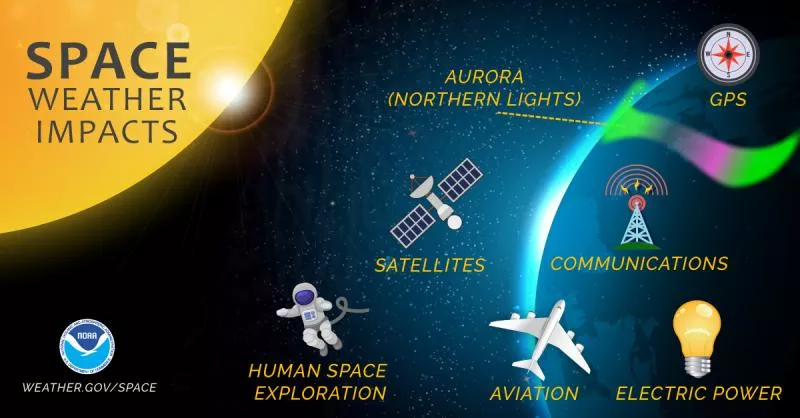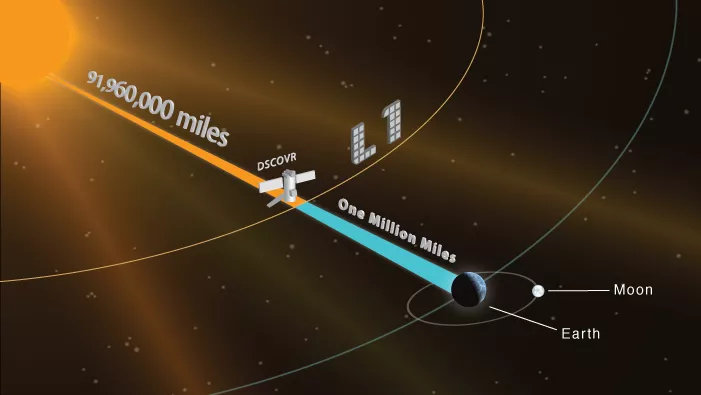Every day we rely on advanced technology – whether it's in the form of our cell phones, a GPS app or just having the lights turn on at the flip of a switch. But all of these conveniences are vulnerable to a serious threat from space: our Sun.

Space weather is a broad term used to describe electromagnetic energy and particles from the sun that blow toward Earth. When these solar emissions reach Earth’s space environment our atmosphere, they can disrupt the technology we use here on Earth. That’s why NOAA is constantly looking for new ways to monitor space weather.
Our partners at NASA are helping us explore how to fly the next mission to Lagrange point 1 (L1), a special orbit that keeps the satellite directly in line between the sun and Earth at all times.
Last week, the NASA Goddard Space Flight Center issued a request for information from commercial vendors to learn more about the instruments needed for NOAA’s Space Weather Follow-on Mission (also known as SWFO-L1). NOAA wants to learn more about the latest satellite technologies capable of monitoring solar wind before it reaches Earth, as well as conditions that can cause geomagnetic storms.
The SWFO-L1 mission would complement and extend measurements from NOAA’s current satellite at Lagrange point 1, the Deep Space Climate Observatory (DSCOVR) satellite, which launched in 2015. In its halo-shaped orbit, one million miles from Earth, the DSCOVR satellite can provide advanced solar wind measurements and early warnings of potentially dangerous space weather events, such as interplanetary coronal mass ejections that can damage our infrastructure.

“Currents generated in space can induce currents in power lines and cause blackouts or disruptions to service,” said Howard Singer, the chief scientist at NOAA’s Space Weather Prediction Center. “Disruptions to the electric grid for hours, or perhaps for days or weeks, are a major concern for national security and human health and safety.”
The Space Weather Follow-On Lagrange-1 point Mission is still in its early planning stages. NOAA is looking forward to hearing from vendors so that we can continue to improve our resilience to dangerous space weather events.
